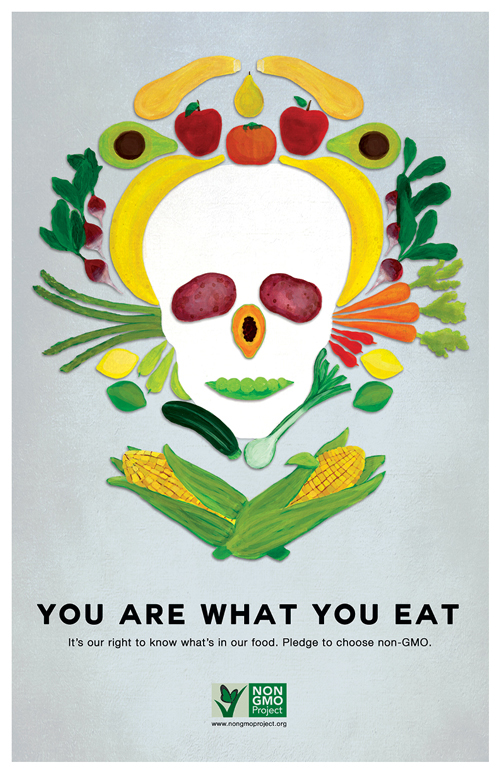Part 2: The Message
2.3 Risk – Who gets to decide?
Learning Objectives
- To explain Sandman’s Hazard x Outrage Framework and how it differs from traditional theories around risk communication.
- To apply this framework to past and current issues and to justify why those issues fit in a particular quadrant.

We usually think about risk as being objective — the product of some sort of scientific formula (e.g., risk = magnitude x probability). For example, Health Canada defines risk as “A measure of both the harm to human health that results from being exposed to a hazardous agent, together with the likelihood that the harm will occur. In order for a health risk to exist, three things must be true: there must be exposure to a hazard; there must be a health effect; and there must be some likelihood that the health effect will occur.”
However, there is a very low correlation between whether something is going to harm people and whether it is going to upset them. A 0.2 correlation to be exact — or so says Peter Sandman in his book Responding to Community Outrage: Strategies for Effective Risk Communication. Sandman argues that this is because our perspective on risk is only half correct.‘The public often misperceives the hazard. The experts often misperceive the outrage. But the overarching problem is that public cares too little about the hazard, and the experts care too little about the outrage. Both are preoccupied with legitimate but incomplete definitions of risk.’ – Peter Sandman Indeed, our perception of risk requires an additional axis, which he calls ‘outrage’, i.e., all the things that people are worried about experts ignore. Instead, Sandman thinks that we should call the ‘scientific’ component of risk (i.e., the magnitude x probability part) hazard and that risk is actually the product of the following equation:
Risk = Hazard x Outrage
If you are going to be an effective risk communicator you CANNOT ignore, dismiss, or belittle public outrage. Indeed, outrage is as real, measurable, and manageable as hazard.
So, if you are going to be an effective risk communicator (and we would suggest that Peter Sandman is among the best there is), then you are going to have to work within the quadrants of risk.
| High Hazard | Low Hazard | |
| High Outrage | When both hazard and outrage are high, you find yourself in the rare but unfortunate position of having to do crisis or emergency communication. | When the hazard is low but outrage is high it may be because people are overestimating hazard (the solution being that you need to explain hazard better) but it may be because they are outraged for other reasons (in which case you need to determine why they are outraged and address it).
|
| Low Outrage | When the opposite is true — when the hazard is high and outrage is low your goal is actually to increase outrage! Here we need to wake our audience up and get them concerned and motivated to act around a particular issue. | When both hazard and outrage are low, you’re in the Happy Place – Sandman calls this the “Sweet Spot”, or sometimes “stakeholder relations”. This is a place where you’re in a mutually respectful dialogue with an interested audience around a risk – people are acting reasonably on all sides and decision-making is mutual. |
If you address the hazard and not the outrage you definitely will not solve the problem and you will probably make it worse. However, if you confuse hazard and outrage or don’t distinguish between the two then you will probably make inappropriate decisions. Sandman suggests that the solution is to take the outrage as seriously as the hazard while at the same time keeping them separate.
For this section of the text, we are going to focus on the two ‘discordant’ quadrants. First we will look at scenarios where the hazard is low but the outrage is high and discuss ways to assess, understand and deal with outrage. Then we use a theory called ‘Precaution Advocacy’ as a lens to deal with scenarios where the hazard is higher than the outrage and you need to motivate people to act.

Supplementary Material
Rowan’s Law: The Risk
by Taneille Johnson (SPPH 552 2020W1)
Rowan was a high school student and rugby player who died in 2013 from second impact syndrome, a consequence of repeated concussions. Rowan’s Law was passed by the Ontario government in 2018 and outlines rules that sports organizations must follow for concussion management and prevention. See: https://www.ontario.ca/page/rowans-law-day
This video ad was created by Rethink Communications for the Government of Ontario.
While concussion awareness has greatly improved the past 5 years, I argue that outrage amongst the public is still low relative to the hazard of repeated concussions. Looking at the 12 main components of outrage discussed in our textbook, these are reasons why public outrage on concussions is low:
- Sport (including contact) is a voluntary risk, therefore the risk of concussion is more acceptable.
- Concussions are familiar and happen every day.
- From my experience, concussions aren’t stigmatized. They happen. There isn’t any associated shame or hiding when one has one.
- The risk from concussion is more often chronic, rather than acute.
- The risk is mostly controlled by the individual- apart from the fact that people can’t control if a teammate hits them in the head.
I really enjoyed this video for several reasons. I think their overall goal was 2 fold: to increase public knowledge and change attitudes about concussions. As an ex-speedskater, I think the team did an amazing job of realistically depicting a high performance athlete. They seamlessly wove in concussion (getting hit by a teammate, falling to the ground). The symptoms of concussion were depicted accurately and effectively. The words and varied intensity of the music contributed to the overall message. The ad ends telling the audience “Don’t risk everything. Know the signs of concussion.”
Looking at our hazard-outrage framework, I this ad primarily targets problem #4.
“Don’t risk everything” concussions ARE catastrophic. They can have HUGE impacts on your life. I think this shifts the impact of concussions to being perceived as more acute instead of something nebulous and chronic.
I walked away from this video feeling upset that kids are subjected to this kind of pressure and risk to their health. So, I think the ad increased my outrage. How about you?
Takeaways
Key Takeaways
- A risk is determined not only by the hazard but also by the amount of outrage associated with that hazard, therefore risk communication must address both these axes.
- The Hazard x Outrage Framework (which categorizes risk based on the degree of hazard and outrage associated with it) can assist in determining an effective approach to communicating.
Media Attributions
- Fig 2.1.1 You Are What You Eat © Michaela Goade is licensed under a CC BY-NC (Attribution NonCommercial) license

